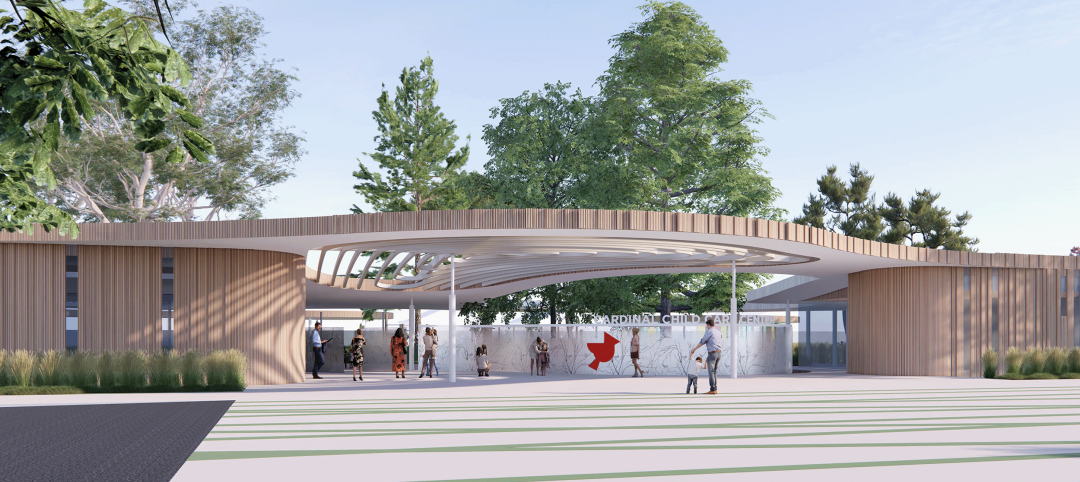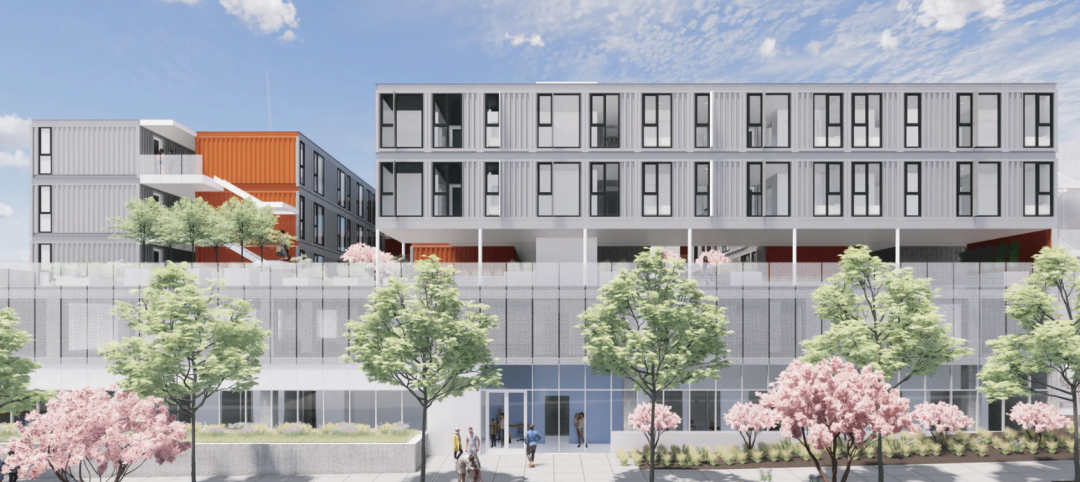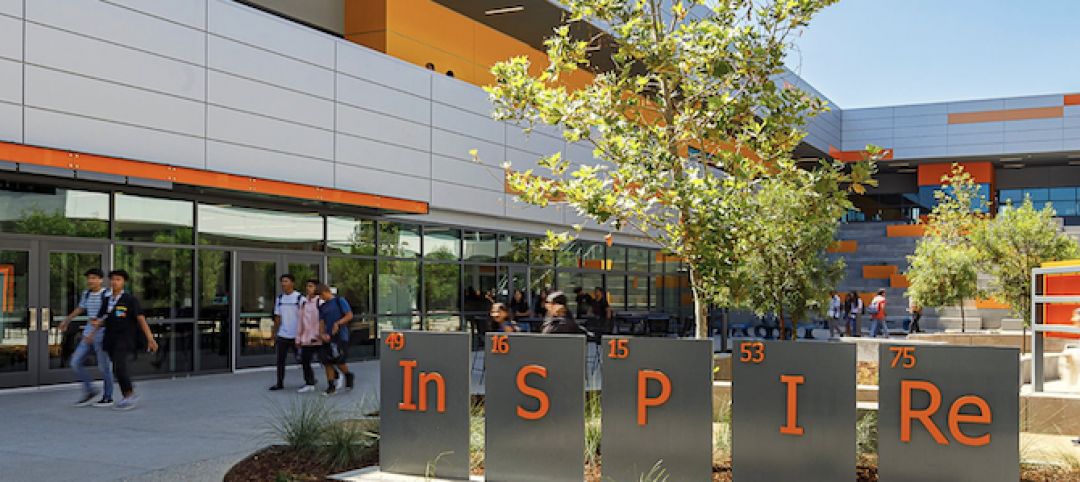For building owners and developers, the push to net zero energy and carbon neutrality is no longer an academic discussion. Government regulators are increasingly requiring that buildings perform more efficiently. Investors are focusing on meeting environmental, social, and governance standards. Tenants are demanding sustainable facilities. At the same time, the American Institute of Architects has declared that global warming is the greatest challenge of our generation, with building operations currently responsible for more than 25% of global carbon emissions.
In recent years, the building industry has made strides forward. We are working with clients to demonstrate the value proposition for high-performance design. Efficient projects don’t have to be dramatically more expensive; the payback on many projects for energy-efficient systems and renewable energy is often years, not decades.
Yet, there’s also an understanding that it’s not good enough. Conservation and smart design strategies will only get buildings so far. The AIA 2030 Commitment target is now an 80% average pEUI reduction from set baselines, an important step toward the ultimate goal of carbon neutrality. The average of the 378 firms reporting data for the AIA 2030 Commitment in 2020 was a 51.3% reduction in pEUI compared to baseline. Clearly, as an industry, we have a long way to go to help clients reach the net zero energy target.
Decarbonization Next Steps
The questions facing the industry: How do we continue to get better? How can we take the next big step forward? How do we get the next 10% and 20% in energy reductions?
A New Approach
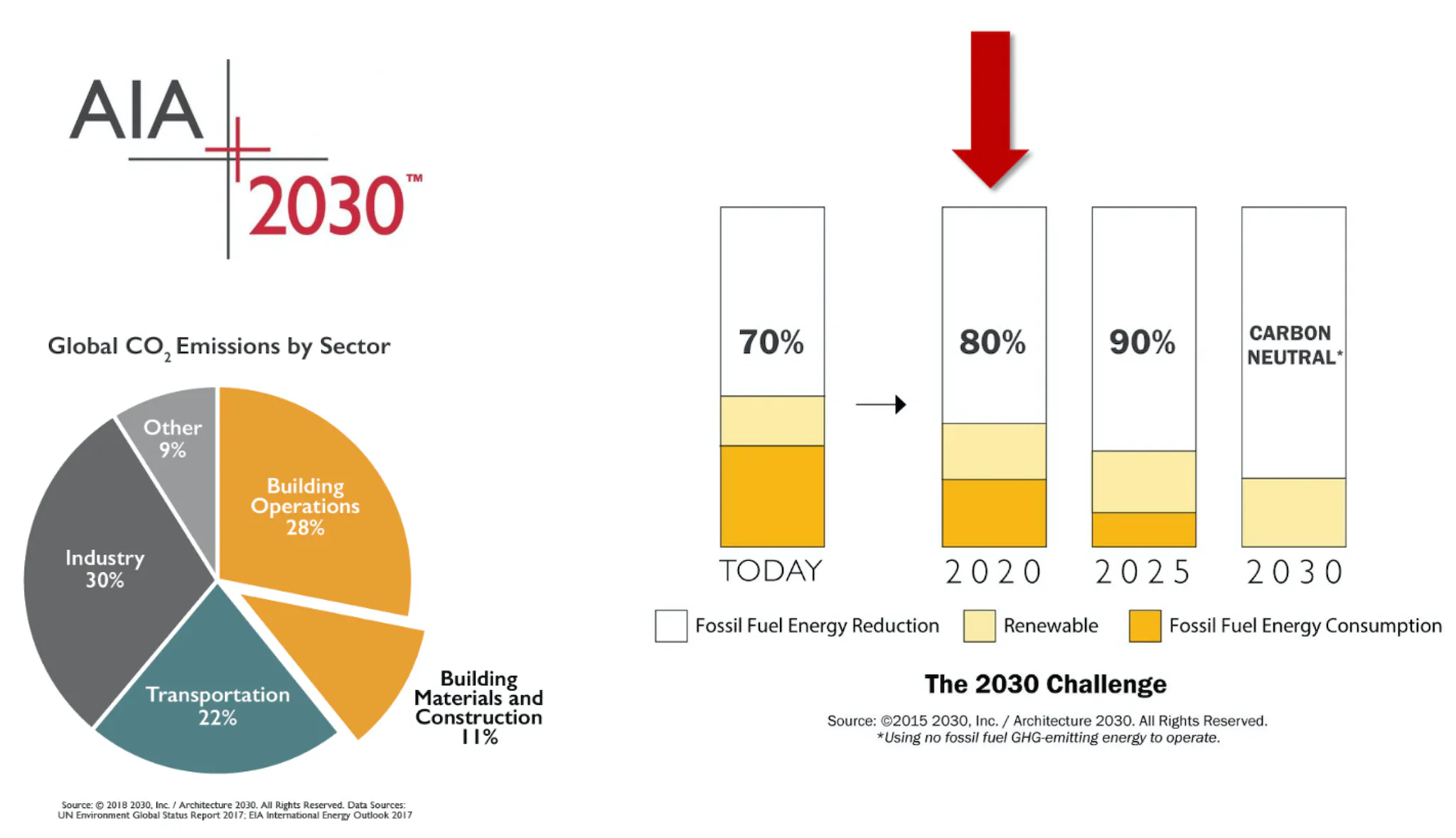
Achieving an industrywide net-zero building portfolio will require more rigor by designers, collaboration by project teams and a moon-shot-like focus on renewable energy.
LPA’s design process is based on the foundation that the old way of approaching projects won’t achieve the goals. On every project, the process starts with an exploration of passive strategies to reduce a structure’s energy use, including orientation, building proportions, façade design, shading and natural ventilation.
High-performance envelope systems, glazing, lighting and HVAC technology can also reduce energy loads. Smart design can improve operating efficiencies and reduce energy use by 50 percent. But there are limits to the effect of passive strategies alone. “To reach the 80% threshold, not to mention the 90% threshold or hit net zero energy, you need to be incorporating renewable energy," says LPA Chief Design Officer Keith Hempel.
While various renewable energy technologies are emerging, photovoltaic (PV) panels are typically the most viable solution at the moment. The economics of PV systems—aided by falling prices, government tax credits, and rising utility energy prices—have improved dramatically in recent years. As government regulators push toward all-electric buildings, PVs will provide inexpensive on-site electricity. Simple payback on PV systems can often be achieved in six to seven years.
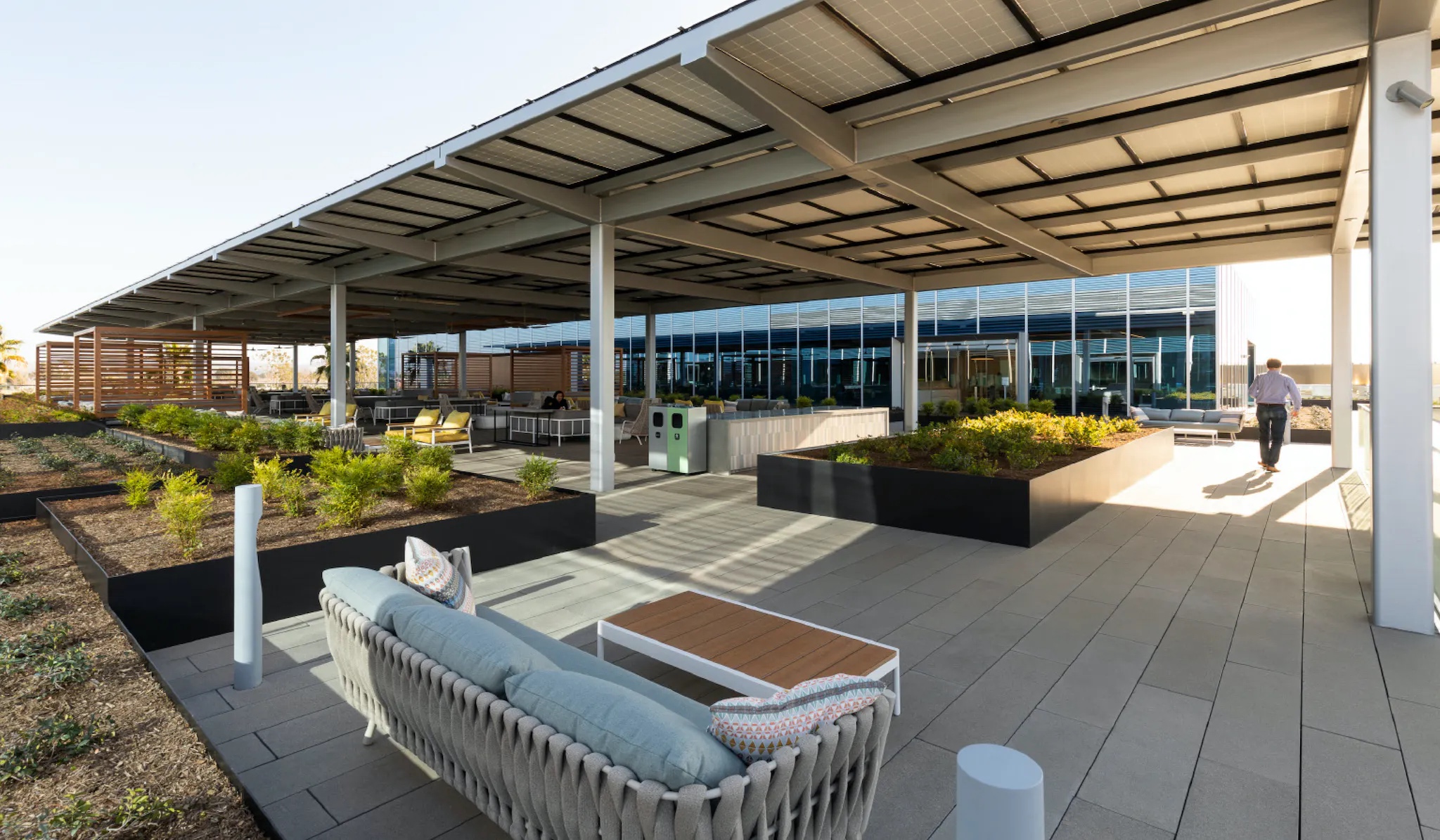
Taking that next step will require design teams to work with their clients to set building performance goals and include discussions of renewable energy in the early planning and budgeting process. In general terms, for a building with a moderate energy load—for example, an office or classroom building—a PV array around half the area of the gross square footage of the building is necessary to offset the annual energy use.
In other words, each 100,000 sf of enclosed space requires 50,000 sf of PV to generate enough energy to power a building’s annual energy consumption. But many project factors, including building use, energy efficiency and climate, will impact these calculations.
For many projects, finding space for effective PV use will require innovation and a different approach to basic design, working with clients to cost-effectively integrate systems into designs. Parking structures and shading systems are often ideal to support PV arrays. Consolidating rooftop mechanical systems, or moving them off the roof completely, can free unshaded roof area for PV systems.
New Technologies
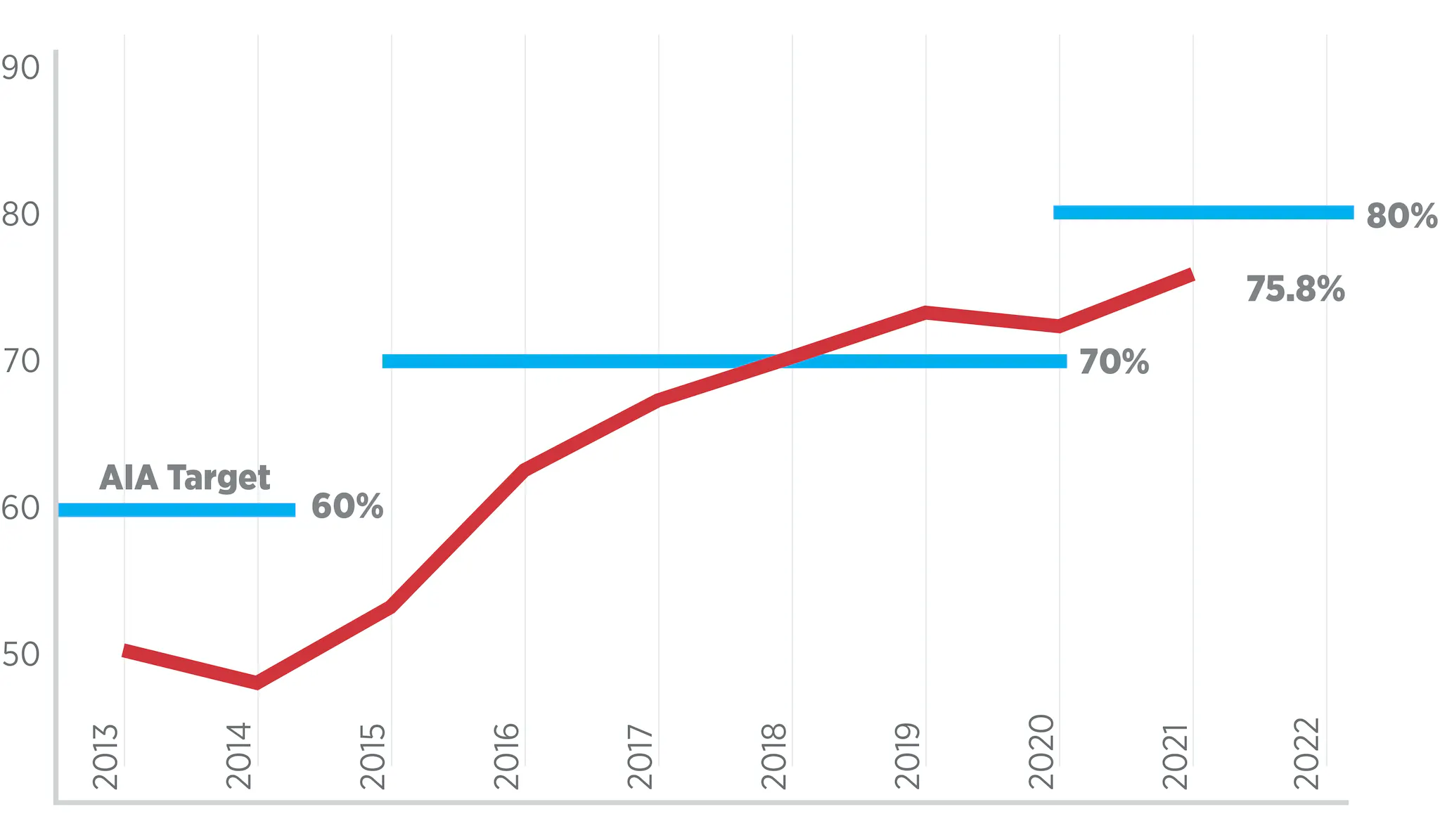
Any attempt to reach net zero energy will require buy-in from the client and the involvement of engineers, contractors, and building operators from the start to find value in the process. The goals won’t be achieved unless they fit the project’s budget.
Part of that analysis includes looking for opportunities to decrease the building’s energy load by reducing the amount of air-conditioned square footage. That translates to activating more outdoor spaces and moving circulation outdoors whenever possible. On several projects, including the expansion of the Edwards Lifesciences campus in Irvine, Calif., outdoor walkways reduced the energy demand and freed up space for other programming.
Technological advances will also help move the needle. Improved batteries will play a key role in allowing storage and flexibility to renewable energy systems, helping projects to operate more cost-effectively, especially during peak demand periods. Although they are expensive and bulky now, batteries will certainly improve, and current projects can plan for flexibility to add storage in the future.
Real Progress
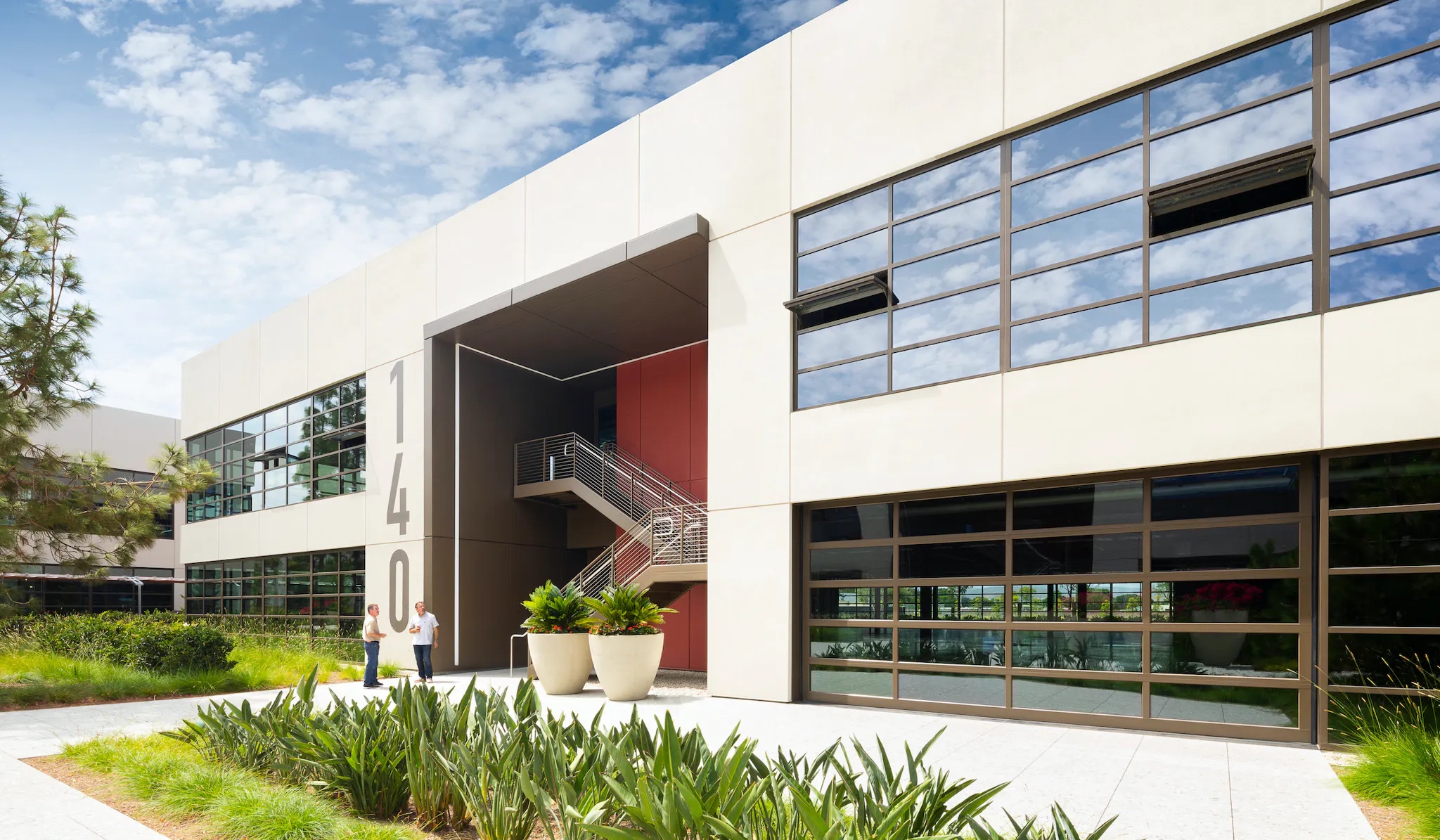
LPA currently has 21 projects in development targeting net zero energy, ranging from an Early Childhood Education Center for the San Bernardino City Unified School District to supportive housing projects in San Diego. The firm had only completed one net zero energy project by 2016; now there are five in service.
The trend is moving up, as more clients embrace performance goals. “Our clients are becoming more interested and engaged in the challenges,” Hempel says. He believes the firm is on track to meet the 80% pEUI target, proving that a large firm working on a wide variety of projects can achieve the 80% AIA 2030 Commitment threshold.
“I’m optimistic,” Hempel says. “When you look at the number of projects that are targeting net zero, you can see that attitudes are changing. These goals are not aspirational; they are achievable if we work together.”
More from Author
LPA | Aug 26, 2024
Windows in K-12 classrooms provide opportunities, not distractions
On a knee-jerk level, a window seems like a built-in distraction, guaranteed to promote wandering minds in any classroom or workspace. Yet, a steady stream of studies has found the opposite to be true.
LPA | May 13, 2024
S.M.A.R.T. campus combines 3 schools on one site
From the start of the design process for Santa Clara Unified School District’s new preK-12 campus, discussions moved beyond brick-and-mortar to focus on envisioning the future of education in Silicon Valley.
LPA | Mar 28, 2024
Workplace campus design philosophy: People are the new amenity
Nick Arambarri, AIA, LEED AP BD+C, NCARB, Director of Commercial, LPA, underscores the value of providing rich, human-focused environments for the return-to-office workforce.
LPA | Feb 8, 2024
LPA President Dan Heinfeld announced retirement
LPA Design Studios announced the upcoming retirement of longtime president Dan Heinfeld, who led the firm’s growth from a small, commercial development-focused architecture studio into a nation-leading integrated design practice setting new standards for performance and design excellence.
LPA | Dec 20, 2022
Designing an inspiring, net zero early childhood learning center
LPA's design for a new learning center in San Bernardino provides a model for a facility that prepares children for learning and supports the community.
LPA | Aug 22, 2022
Less bad is no longer good enough
As we enter the next phase of our fight against climate change, I am cautiously optimistic about our sustainable future and the design industry’s ability to affect what the American Institute of Architects (AIA) calls the biggest challenge of our generation.
LPA | Aug 9, 2022
Designing healthy learning environments
Studies confirm healthy environments can improve learning outcomes and student success.
LPA | Jul 6, 2022
The power of contextual housing development
Creating urban villages and vibrant communities starts with a better understanding of place, writes LPA's Matthew Porreca.
LPA | Mar 21, 2022
Finding the ROI for biophilic design
It takes more than big windows and a few plants to create an effective biophilic design.
LPA | Apr 28, 2021
Did the campus design work?
A post-occupancy evaluation of the eSTEM Academy provides valuable lessons for future campuses.






